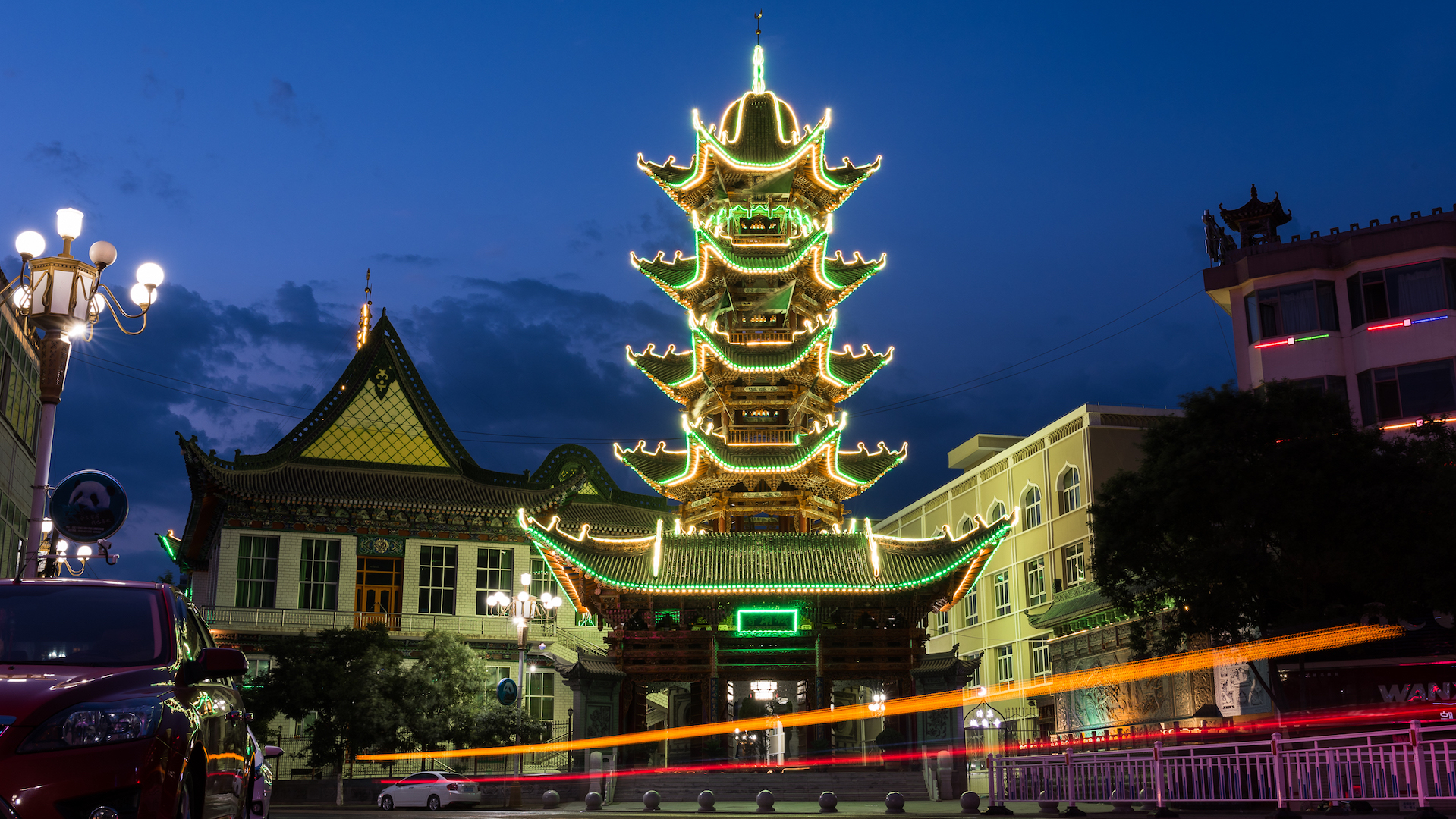
As loudspeakers crackle with a summons to evening prayers, millions of Muslims stream into mosques across the country. But these devoted followers of Mohammed are not in the Middle East or Central Asia. They’re in China.
Twenty-three million Muslims—23,000,000—live in China, roughly the number of people who live on the entire continent of Australia. Even if some adherents don’t fully understand Islam or follow it as Muslims in other countries do, Islam lies at the core of their identity and way of life. This photo gallery explores their houses of worship, their devotion, and their lifestyle.
Houses of Worship
 While cues are sometimes taken from traditional Islamic architecture, Chinese Muslims incorporate their own cultural inspirations into designs for their religious buildings. Here, a pagoda-style mosque marries the two design cultures in Gansu Province in the city of Linxia, the “Mecca of China.”
While cues are sometimes taken from traditional Islamic architecture, Chinese Muslims incorporate their own cultural inspirations into designs for their religious buildings. Here, a pagoda-style mosque marries the two design cultures in Gansu Province in the city of Linxia, the “Mecca of China.”
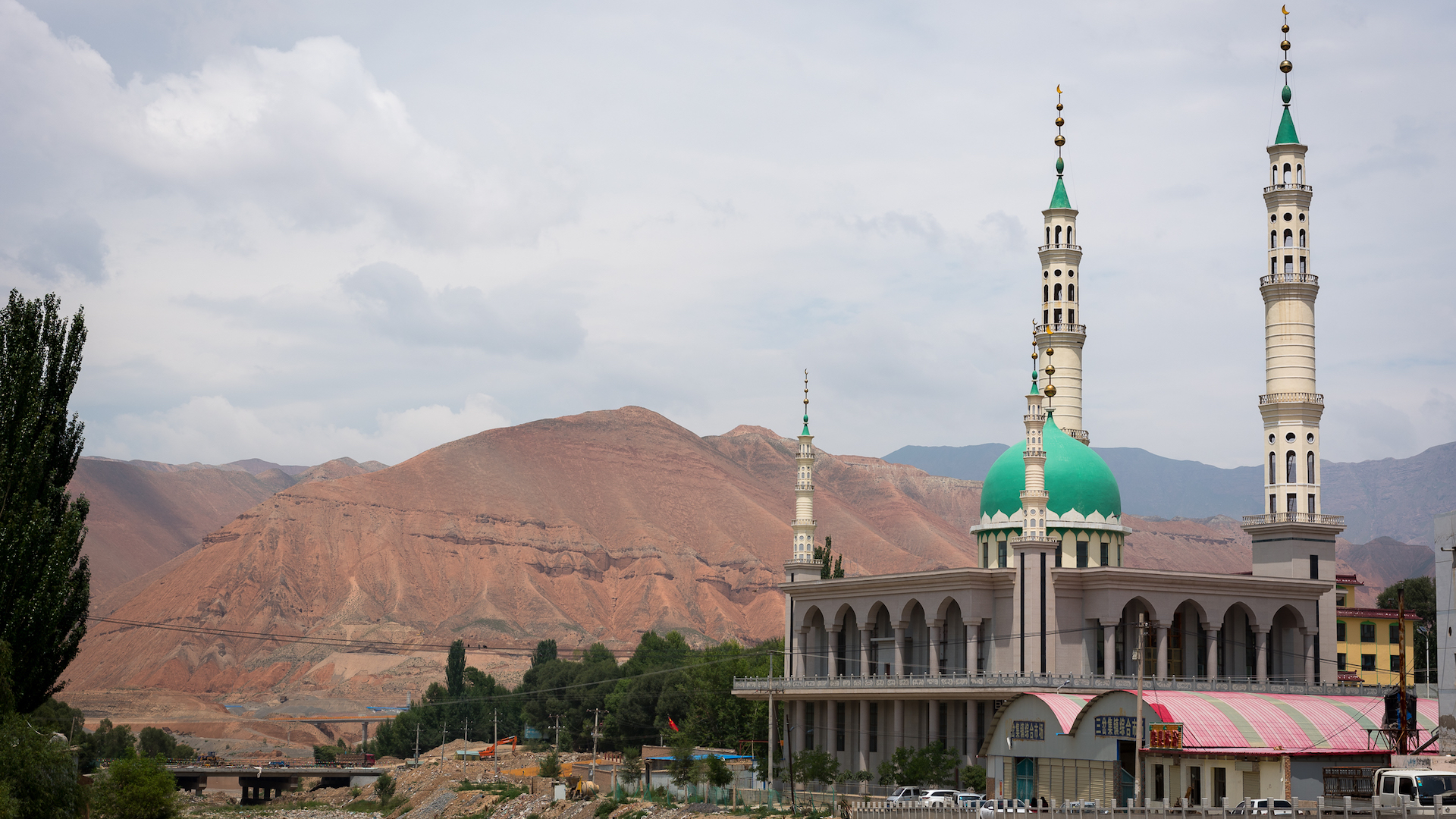 Mosques dot the landscape of western China, much like small country churches do in the southern United States. This towering mosque in Xunhua, Qinghai Province, casts a long shadow over much of the city.
Mosques dot the landscape of western China, much like small country churches do in the southern United States. This towering mosque in Xunhua, Qinghai Province, casts a long shadow over much of the city.
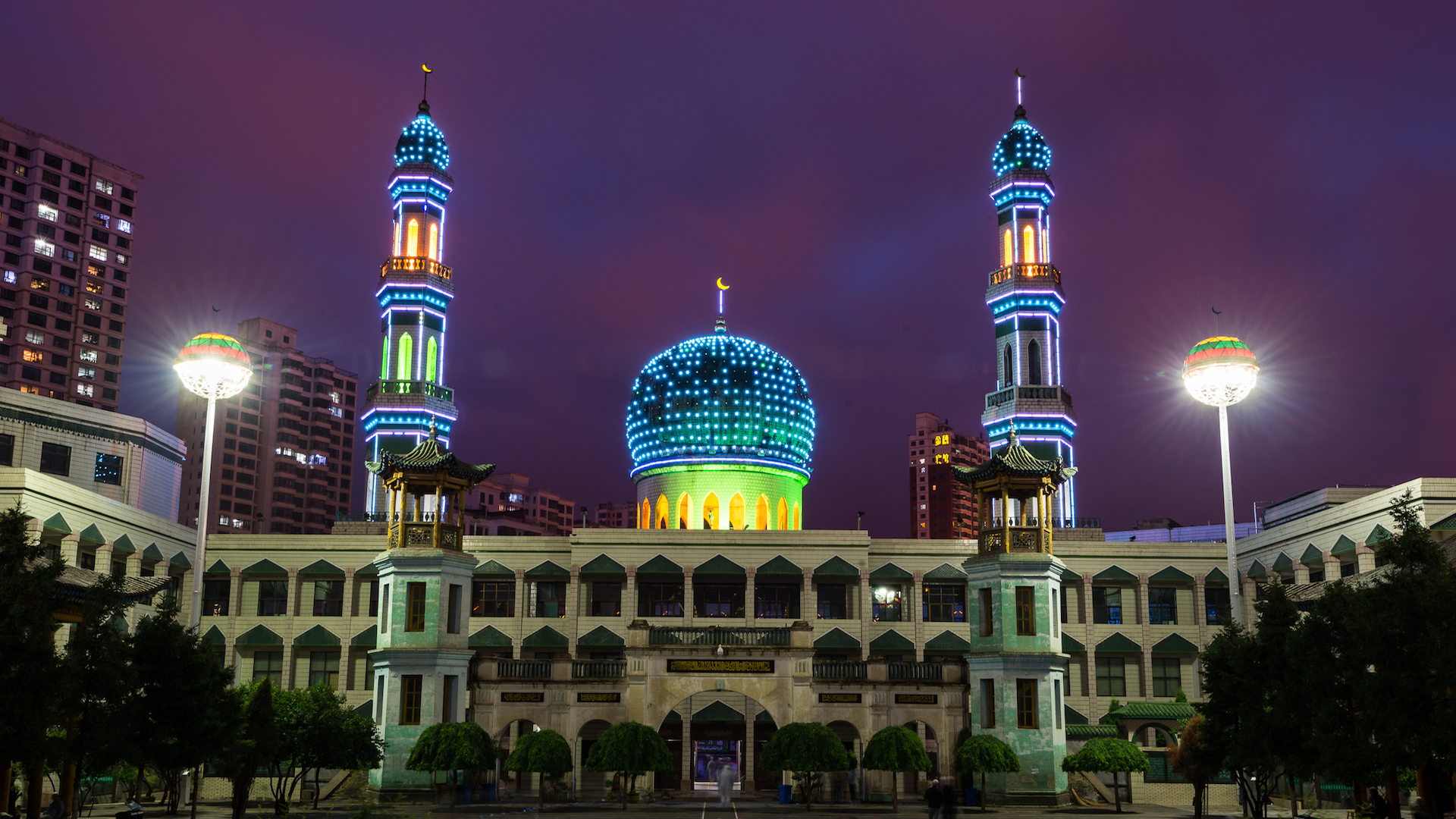
The Dongguan Mosque, the largest and most famous mosque in Xining, Qinghai Province, hosts Islamic worshipers in the capital city. It was first built in 1380 and now functions as an Islamic educational institution and worship center.
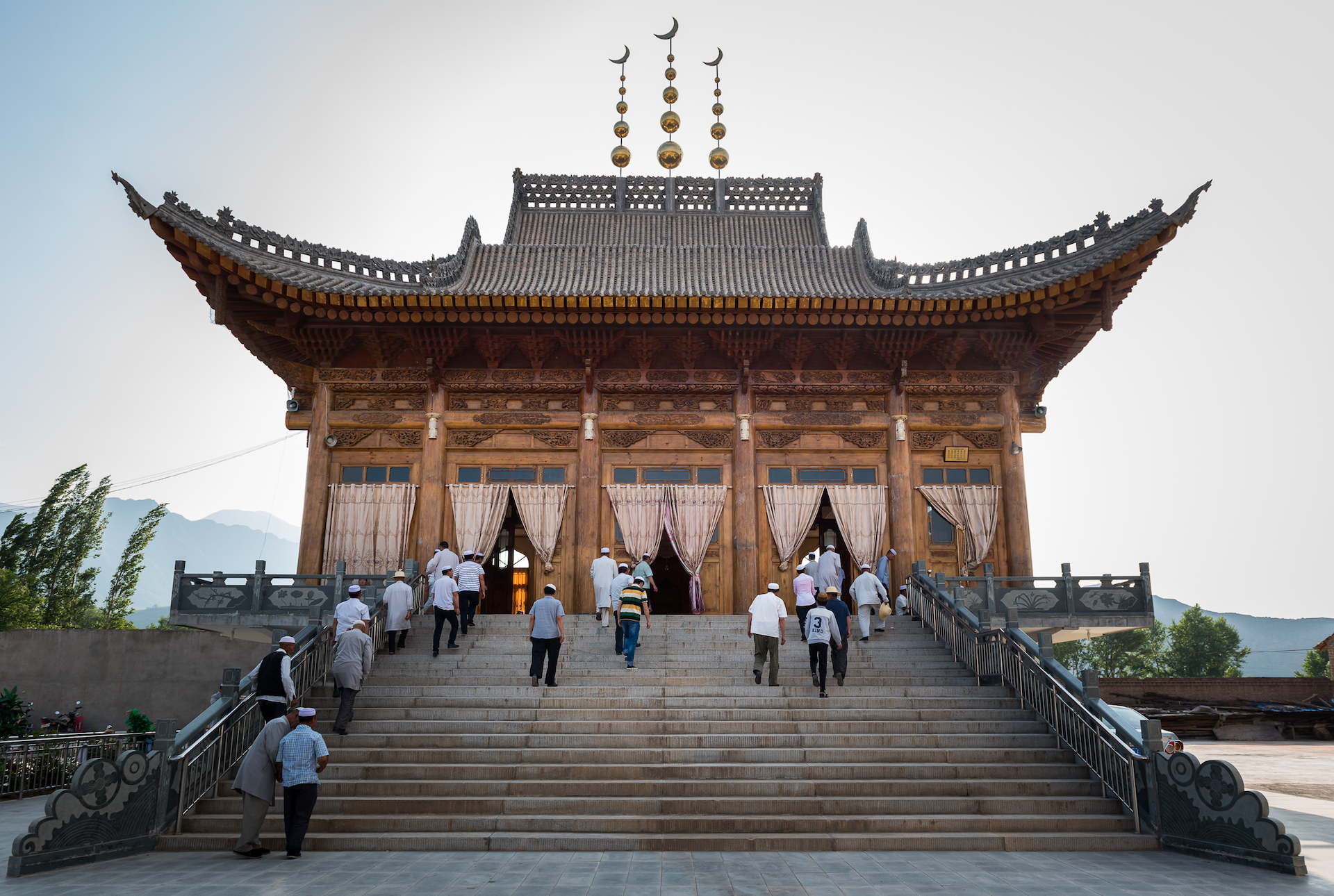 Bao’an men gather at a mosque in Ji Shi Shan in China’s Gansu Province during Ramadan. The Bao’an are one of the smallest minority groups recognized by the Chinese government. Architects designed the mosque with three crescent moons, a common symbol in Islam. However, many scholars and strict adherents reject the moons due to a long-held conviction that symbols can be marks of paganism.
Bao’an men gather at a mosque in Ji Shi Shan in China’s Gansu Province during Ramadan. The Bao’an are one of the smallest minority groups recognized by the Chinese government. Architects designed the mosque with three crescent moons, a common symbol in Islam. However, many scholars and strict adherents reject the moons due to a long-held conviction that symbols can be marks of paganism.
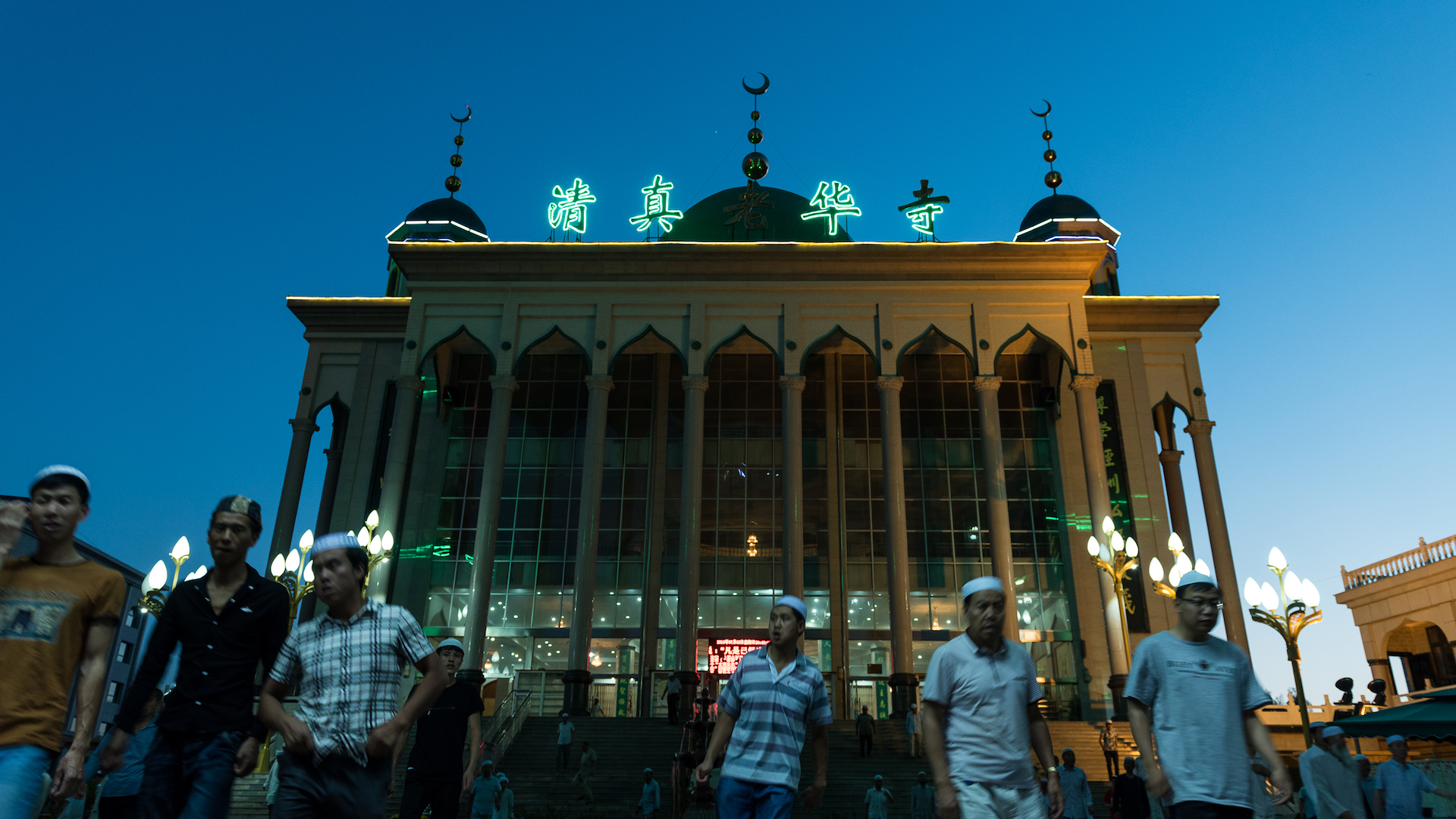 Men leave the Laohua mosque at the conclusion of an evening prayer time during Ramadan in Linxia, Gansu Province. The six-hundred-year-old mosque also hosts Muslim scholars who come to further their studies and dialogue with other academics.
Men leave the Laohua mosque at the conclusion of an evening prayer time during Ramadan in Linxia, Gansu Province. The six-hundred-year-old mosque also hosts Muslim scholars who come to further their studies and dialogue with other academics.
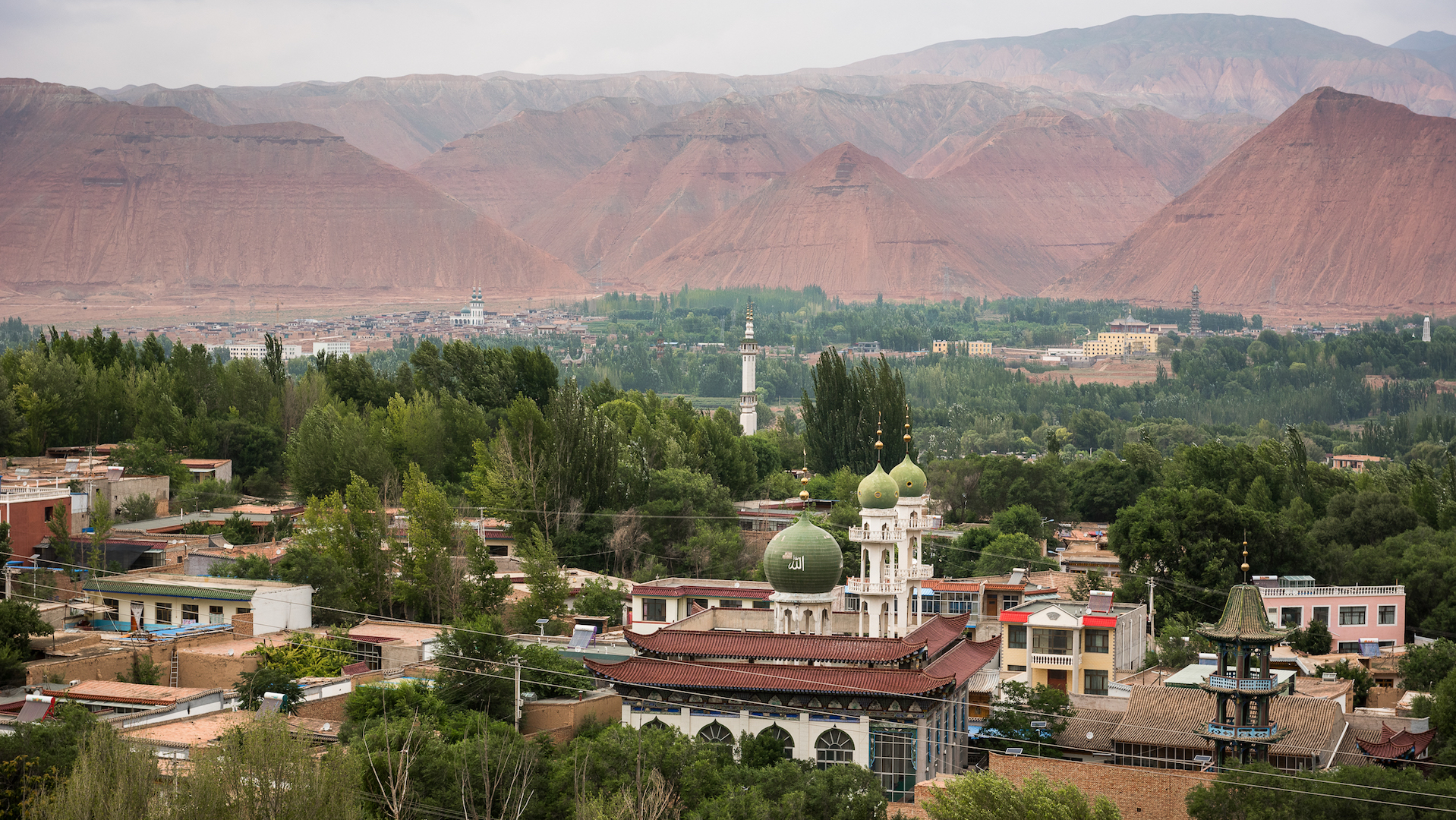 Each mosque has distinctive architecture, but all have minarets that direct the observer’s gaze upward. Above, at a mosque in the valley of Xunhua, Qinghai Province, green turnip-shaped domes crown the tops of the minarets.
Each mosque has distinctive architecture, but all have minarets that direct the observer’s gaze upward. Above, at a mosque in the valley of Xunhua, Qinghai Province, green turnip-shaped domes crown the tops of the minarets.
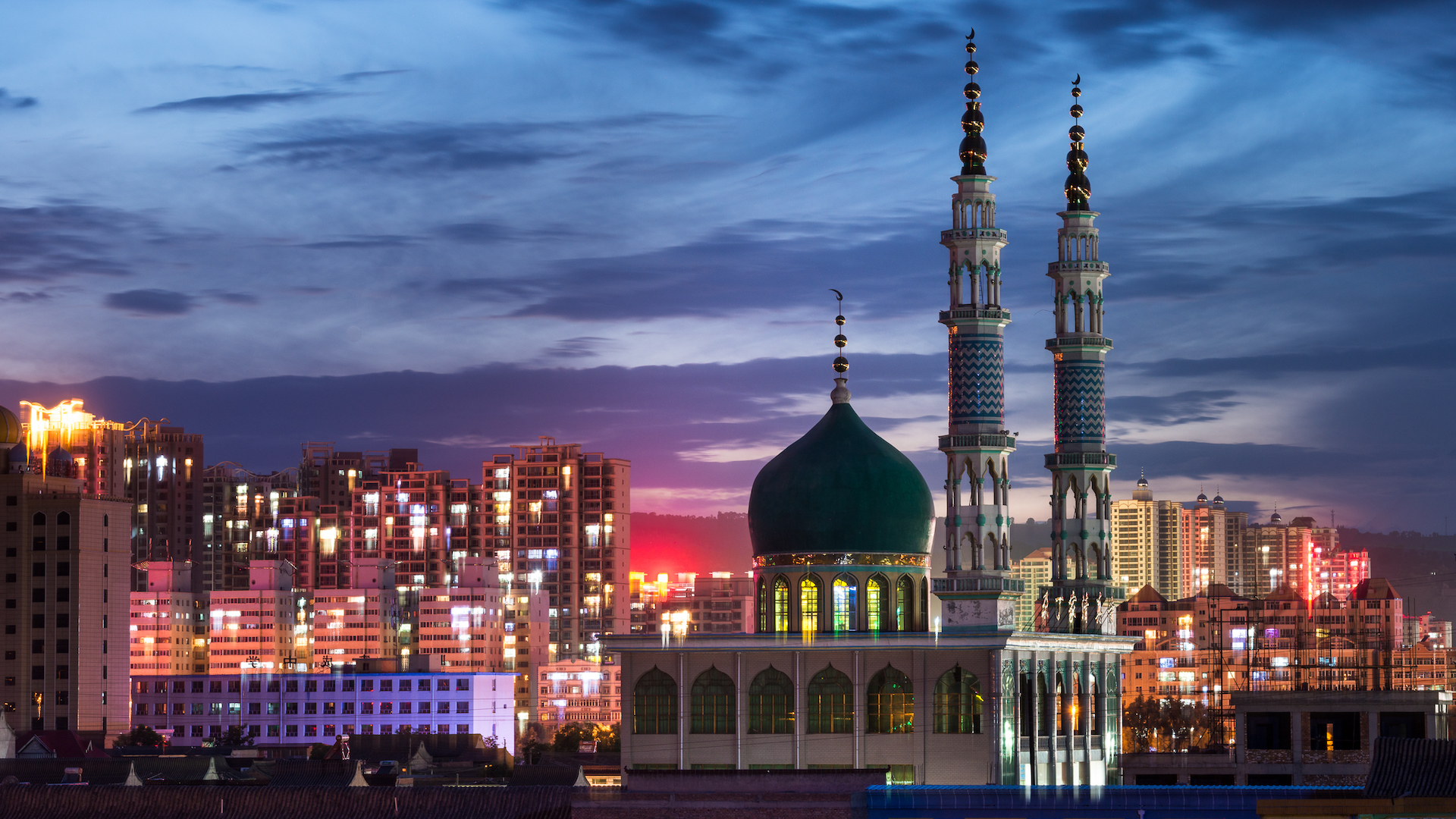 A mosque in Linxia, Gansu Province, stands out prominently among tall buildings in the urban area. Islam is not the only religion around, though. Christian churches also exist in Linxia, and the world’s second largest Tibetan Buddhist monastery is only a forty-five-minute drive away.
A mosque in Linxia, Gansu Province, stands out prominently among tall buildings in the urban area. Islam is not the only religion around, though. Christian churches also exist in Linxia, and the world’s second largest Tibetan Buddhist monastery is only a forty-five-minute drive away.
Their Devotion and Practice
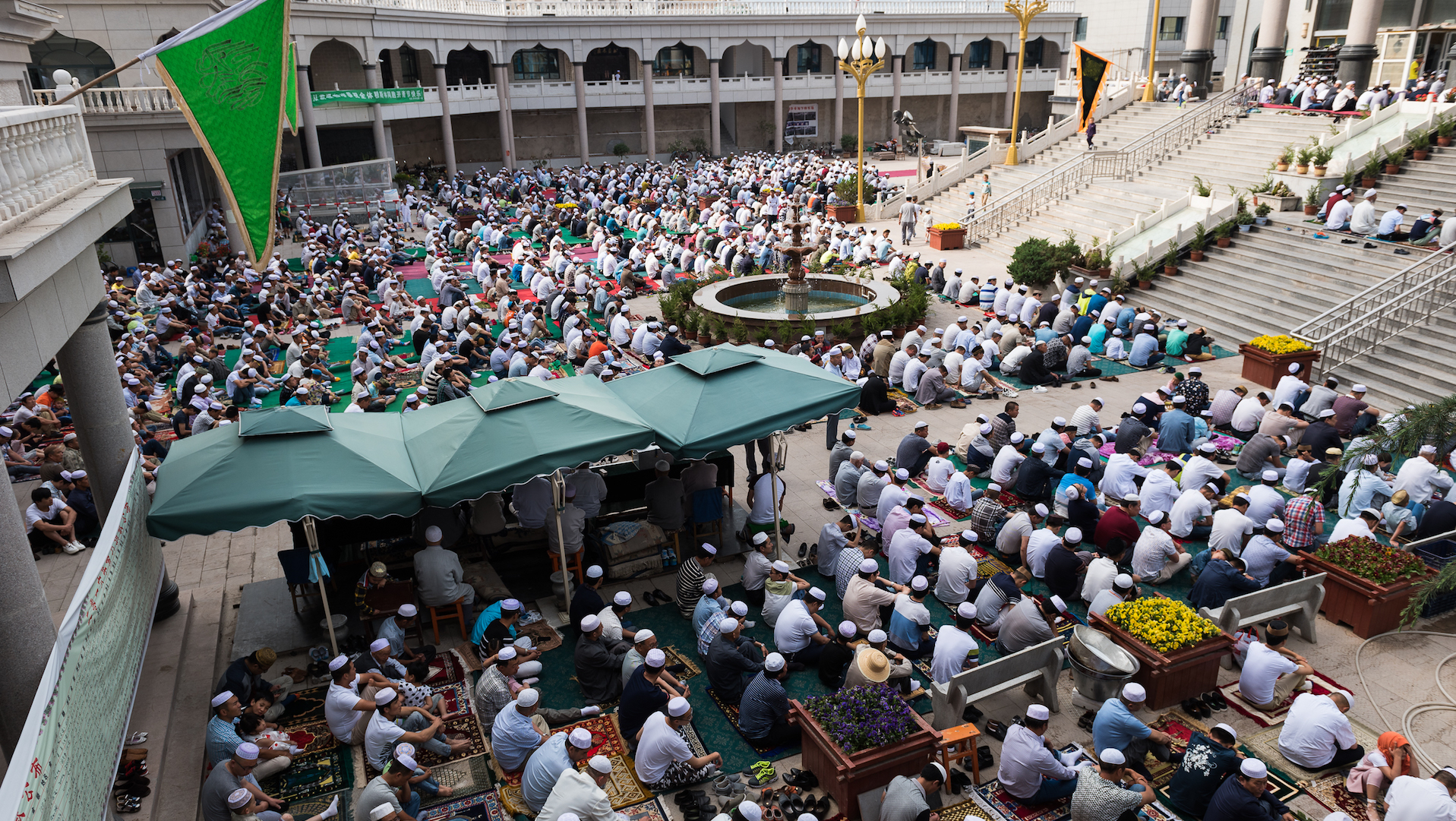 Much like Christmas and Easter, major Islamic holidays draw larger numbers to houses of prayer. During Ramadan an overflow crowd prays in the courtyard of a mosque in Linxia, Gansu Province.
Much like Christmas and Easter, major Islamic holidays draw larger numbers to houses of prayer. During Ramadan an overflow crowd prays in the courtyard of a mosque in Linxia, Gansu Province.
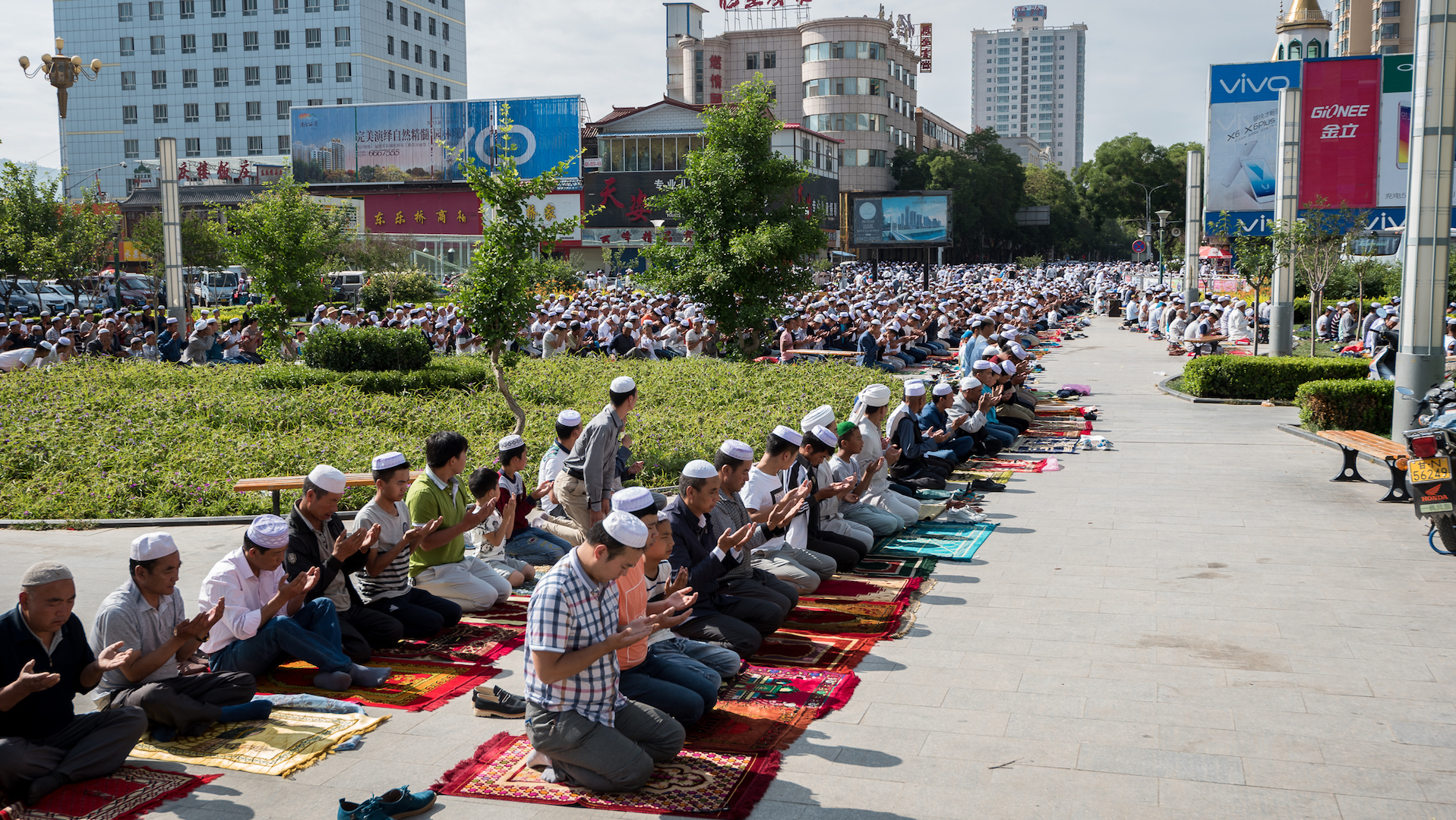 The end of Ramadan, Eid al-Fitr, triggers a surge of attendance as worshipers spill onto the sidewalks outside a mosque in Linxia, Gansu Province.
The end of Ramadan, Eid al-Fitr, triggers a surge of attendance as worshipers spill onto the sidewalks outside a mosque in Linxia, Gansu Province.
Attendance at daily prayers during other times of the year subsides. Older Muslim men, acutely concerned for their spiritual condition, continue to prioritize daily prayers. Younger adult Muslims, however, have work schedules that preclude frequent attendance. Friday afternoons elicit higher turnout because it’s considered a holy day.
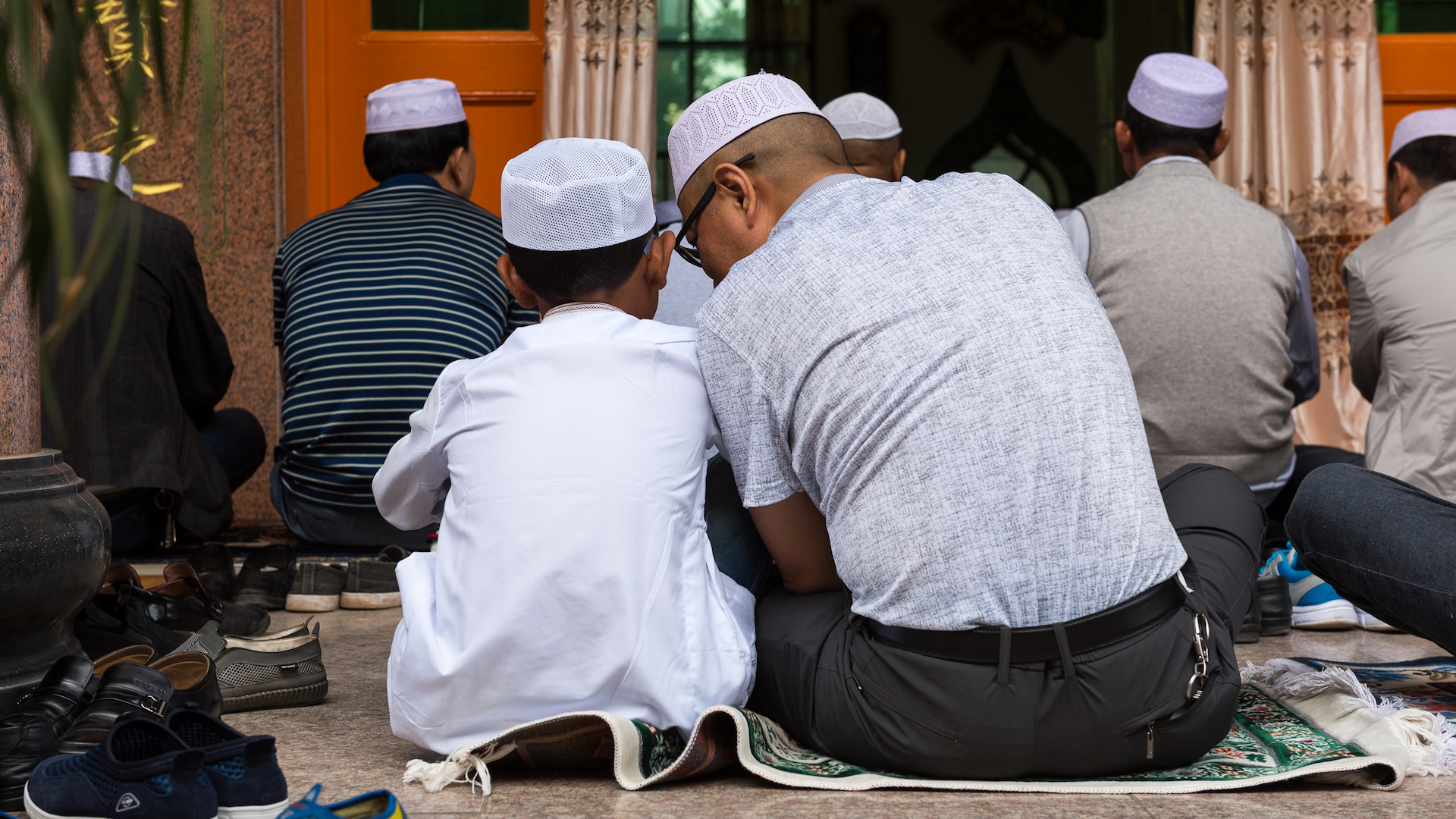 Muslims in China believe their ethnicities and religion are inextricably tied together, in the same way that an Israeli is considered Jewish by birth or a Tibetan is Buddhist by birth. Muslims teach their children Islam as a way of life and as a part of their personal identities.
Muslims in China believe their ethnicities and religion are inextricably tied together, in the same way that an Israeli is considered Jewish by birth or a Tibetan is Buddhist by birth. Muslims teach their children Islam as a way of life and as a part of their personal identities.
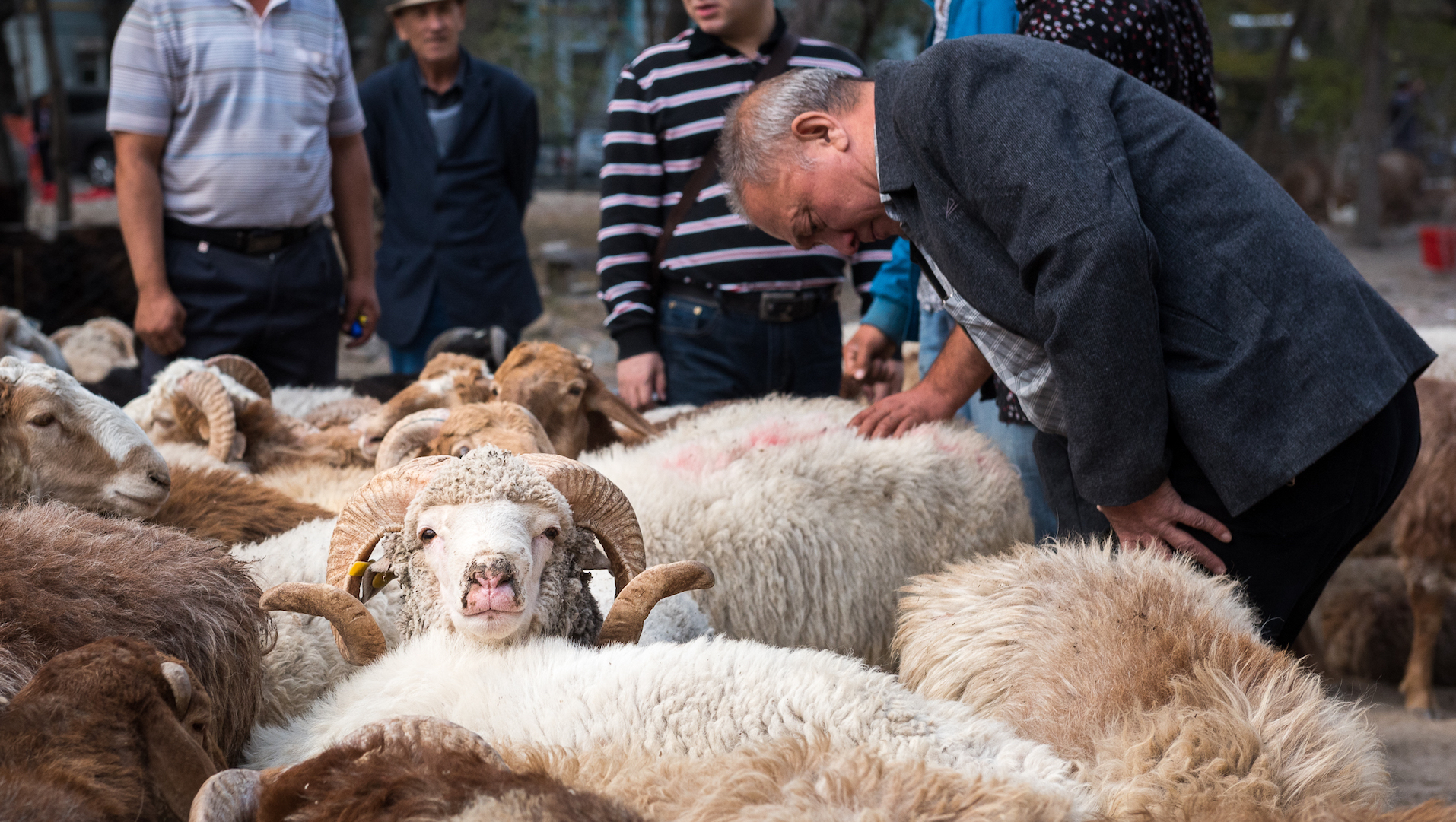 One of China’s largest minority peoples aren’t Chinese at all. The Uyghurs, a Turkic ethnic group, closely identify with Central Asians culturally and ethnically. They have primarily practiced Islam since the eleventh century, and like most Muslim peoples living in China, their religion is intrinsically tied to their ethnic identity.
One of China’s largest minority peoples aren’t Chinese at all. The Uyghurs, a Turkic ethnic group, closely identify with Central Asians culturally and ethnically. They have primarily practiced Islam since the eleventh century, and like most Muslim peoples living in China, their religion is intrinsically tied to their ethnic identity.
In keeping with tradition for Eid al-Adha, the Uyghur man above inspects a ram for blemishes before he makes his final purchase. The ram he takes home will be sacrificed to commemorate the qur’anic story of Abraham and Ishmael.
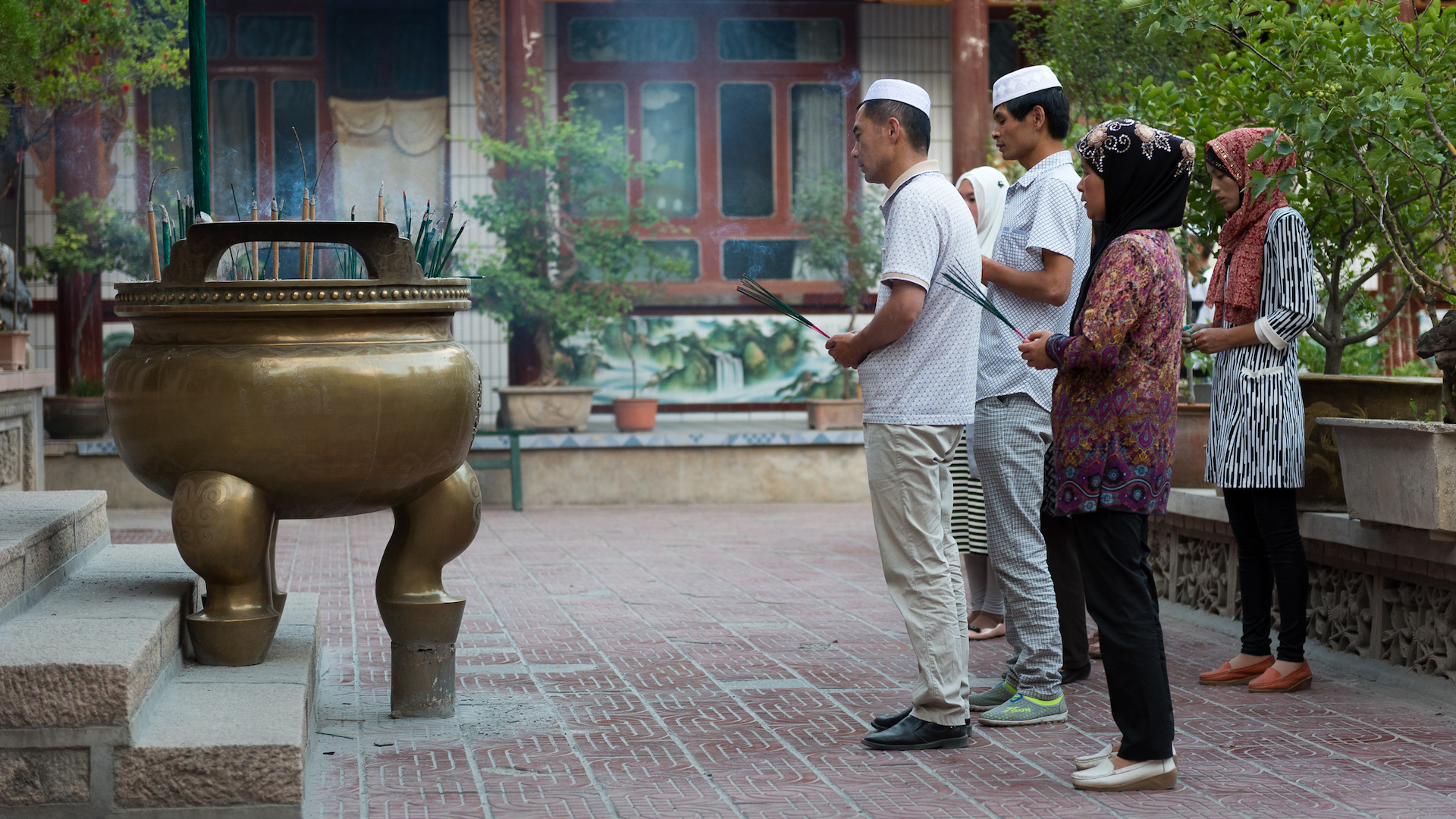 Muslims burn incense and offer prayers at a gongbei, a burial place for famous Muslim leaders, in Linxia, Gansu Province. The syncretistic practice of venerating the dead is an element of Chinese folk religion commonly practiced by Hui.
Muslims burn incense and offer prayers at a gongbei, a burial place for famous Muslim leaders, in Linxia, Gansu Province. The syncretistic practice of venerating the dead is an element of Chinese folk religion commonly practiced by Hui.
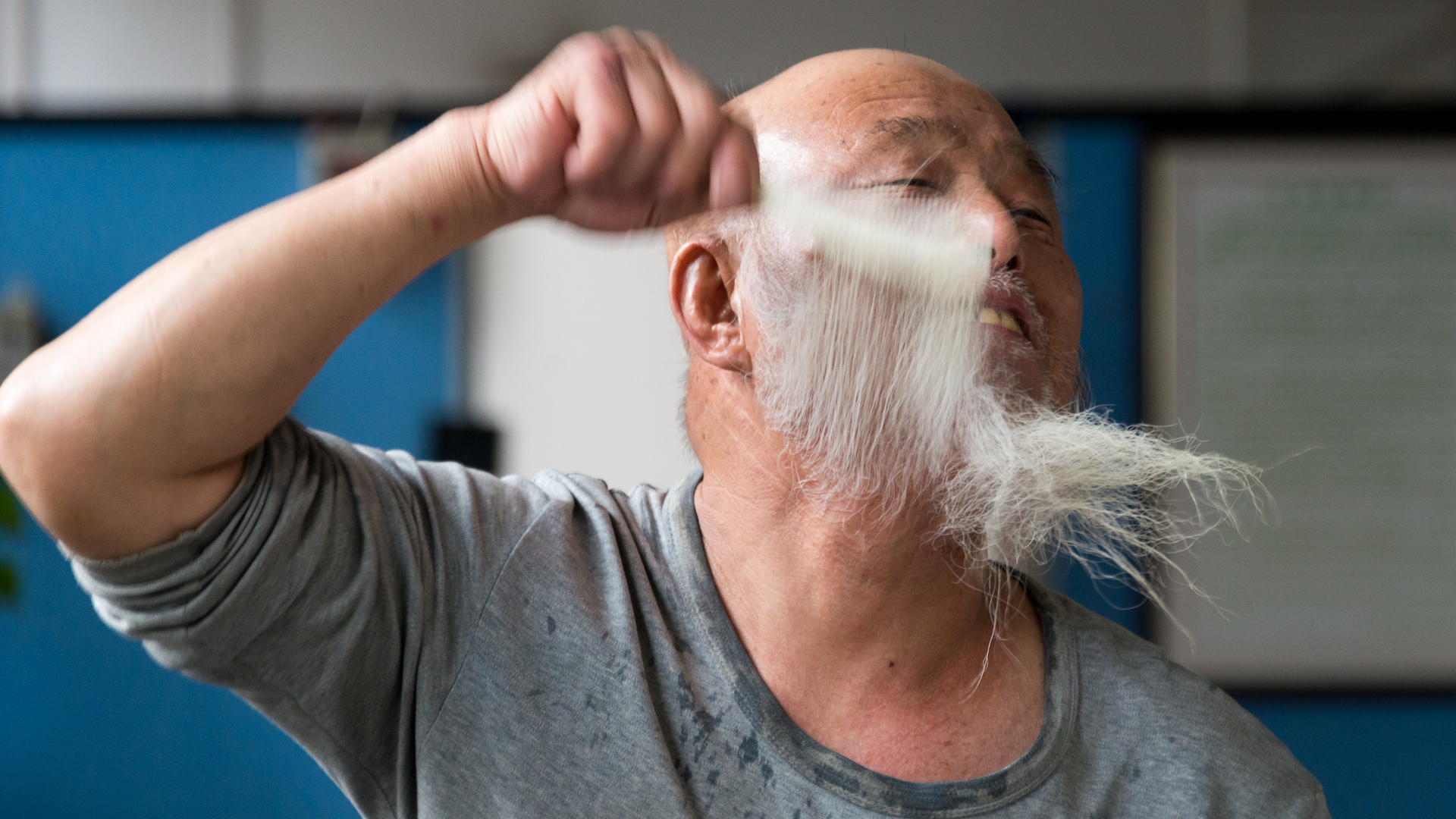 The Hadiths document Muhammed’s claim, “Cleanliness is half of faith.” Muslim men wash their hands, feet, and face, and then comb their beards in preparation for prayers, as this man does inside the complex of a mosque in Shenyang, Liaoning Province.
The Hadiths document Muhammed’s claim, “Cleanliness is half of faith.” Muslim men wash their hands, feet, and face, and then comb their beards in preparation for prayers, as this man does inside the complex of a mosque in Shenyang, Liaoning Province.
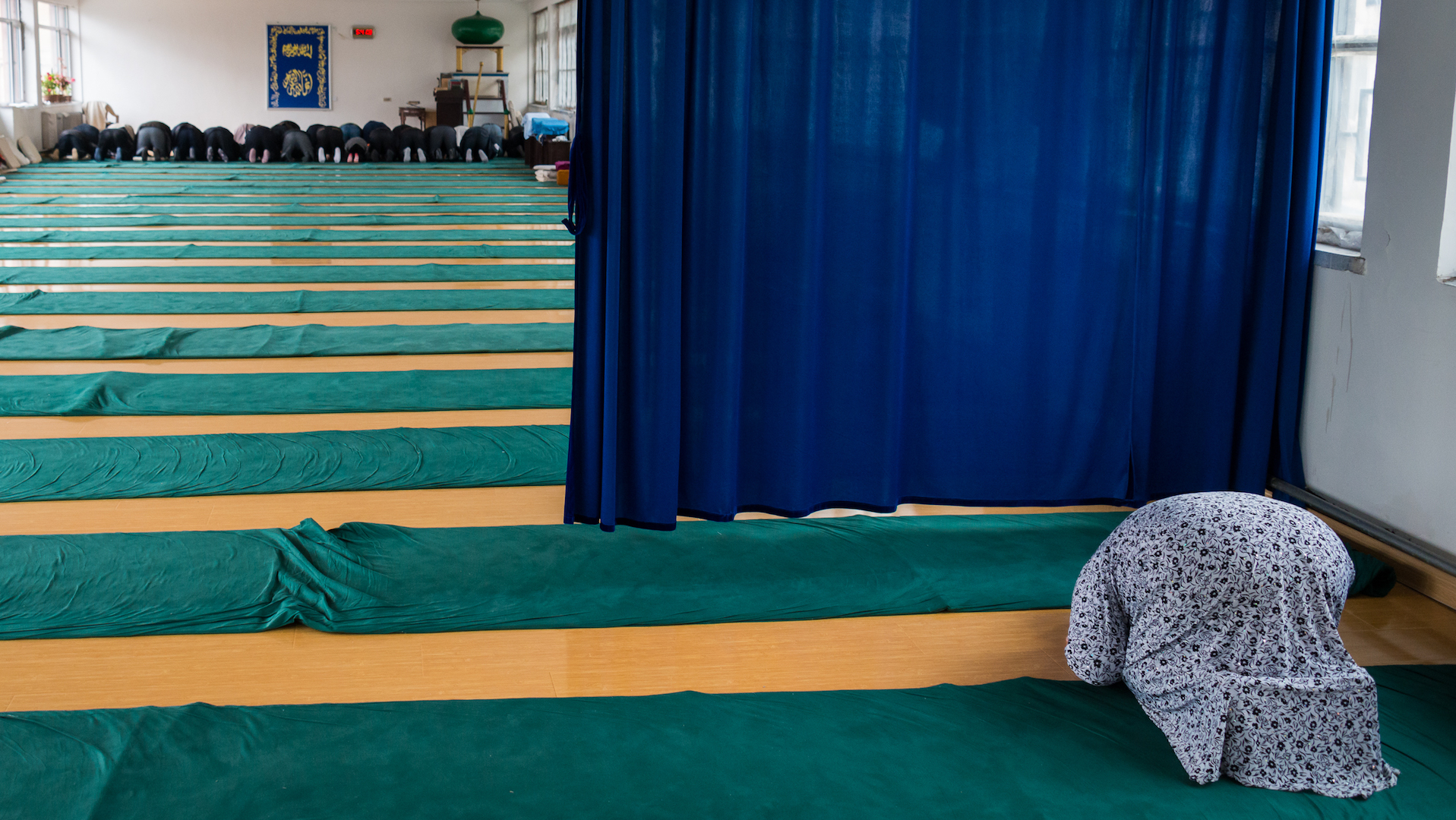 Women also pray in mosques, but do so separately from the men. Mosques usually have segregated rooms, though in the instance above, a woman prays in the same room, divided from the men by a curtain. Women often work in mosque kitchens and assist the imam, the chief spiritual leader, to run the mosque’s daily operations.
Women also pray in mosques, but do so separately from the men. Mosques usually have segregated rooms, though in the instance above, a woman prays in the same room, divided from the men by a curtain. Women often work in mosque kitchens and assist the imam, the chief spiritual leader, to run the mosque’s daily operations.
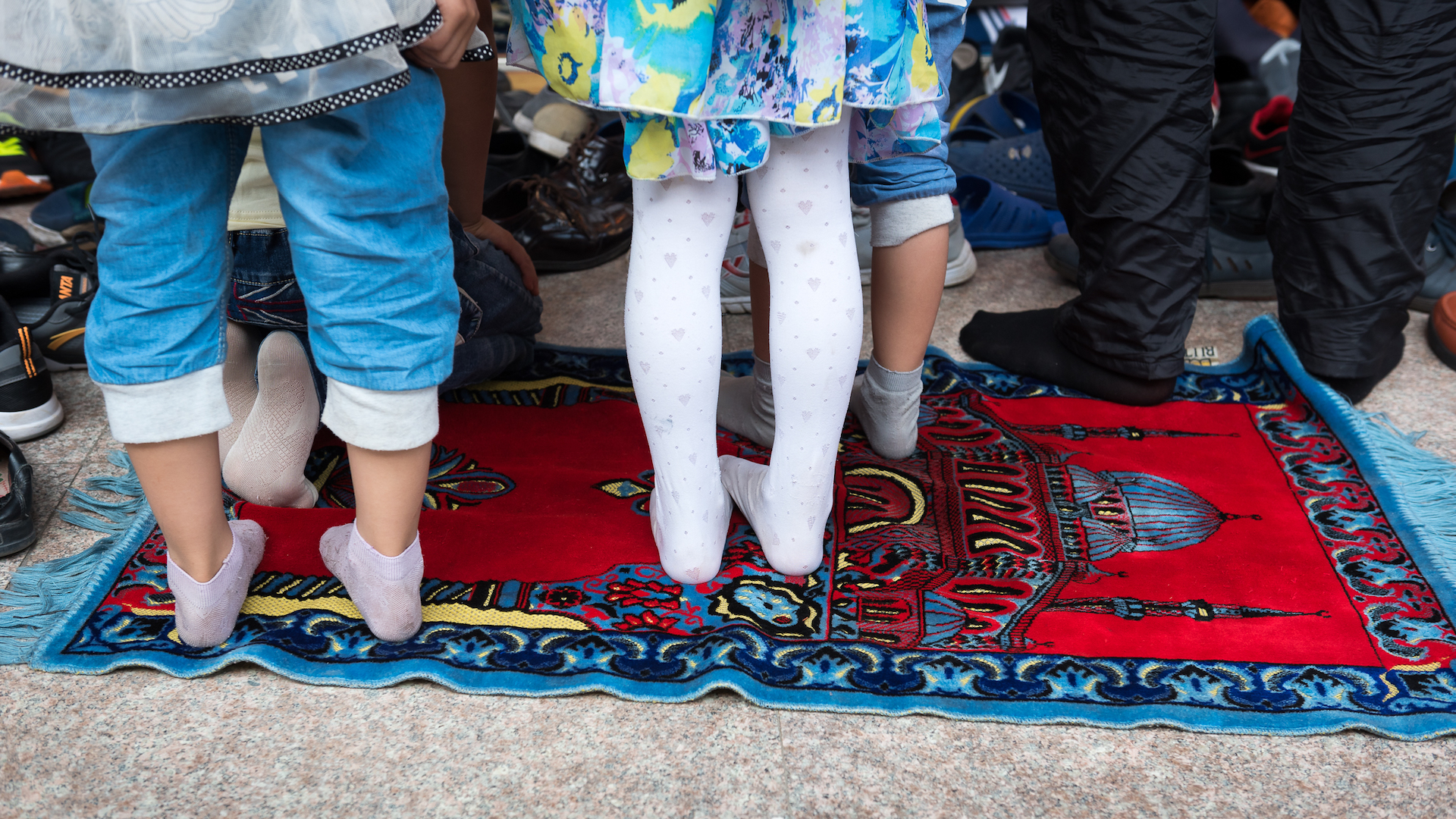 When children are brought along, they often watch from the back of the mosque as their fathers attend prayer time.
When children are brought along, they often watch from the back of the mosque as their fathers attend prayer time.
Muslims in China Create Their Own Culture
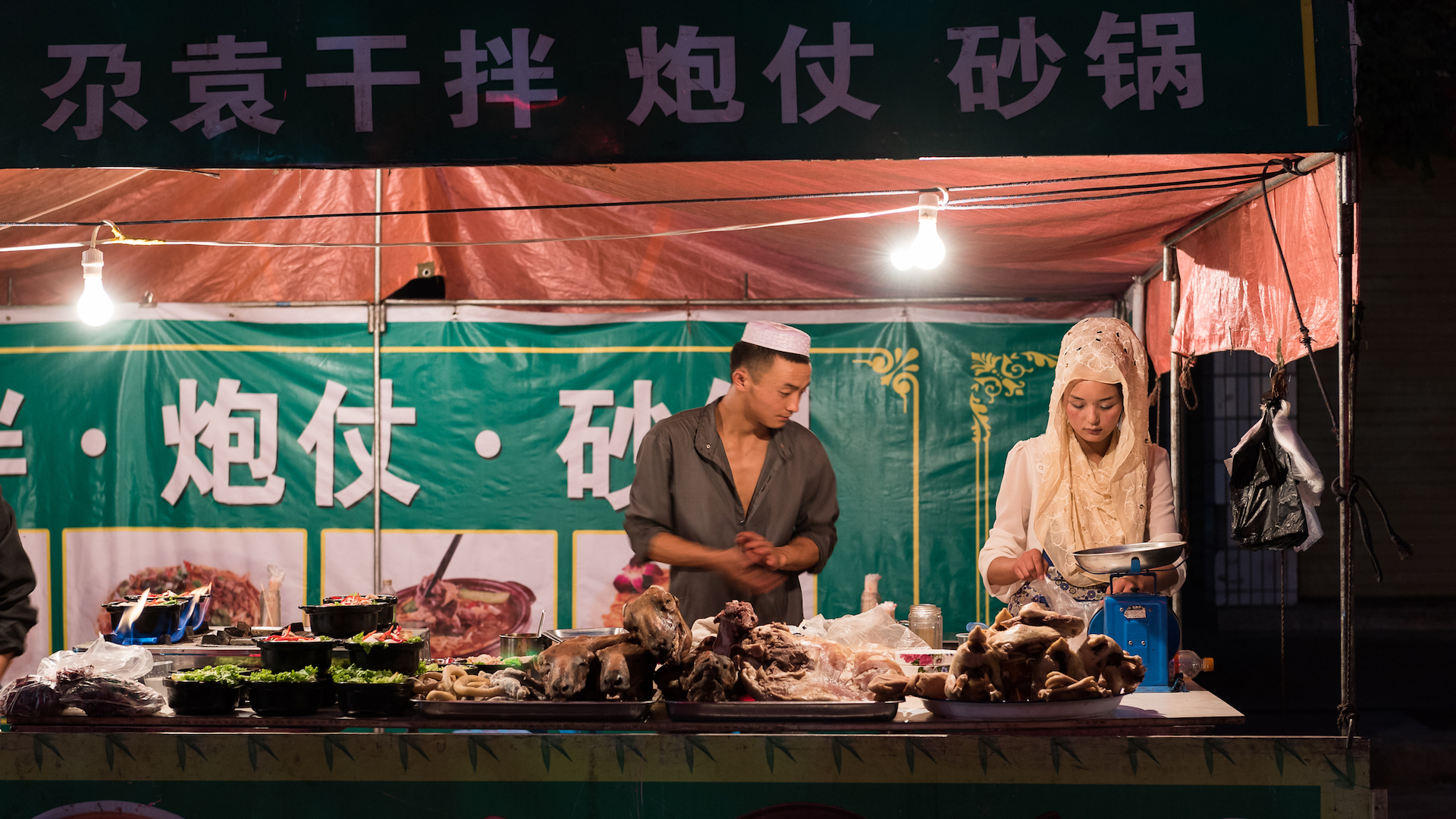 Islamic practices require food to be qing zhen (pronounced “ching jen”), otherwise known as halal, or “permissible.” This means the food has been ceremoniously raised, handled, and blessed. Pork is not allowed. As Muslims move in search of better work opportunities, they often open their own restaurants to ensure the food they eat is qing zhen.
Islamic practices require food to be qing zhen (pronounced “ching jen”), otherwise known as halal, or “permissible.” This means the food has been ceremoniously raised, handled, and blessed. Pork is not allowed. As Muslims move in search of better work opportunities, they often open their own restaurants to ensure the food they eat is qing zhen.
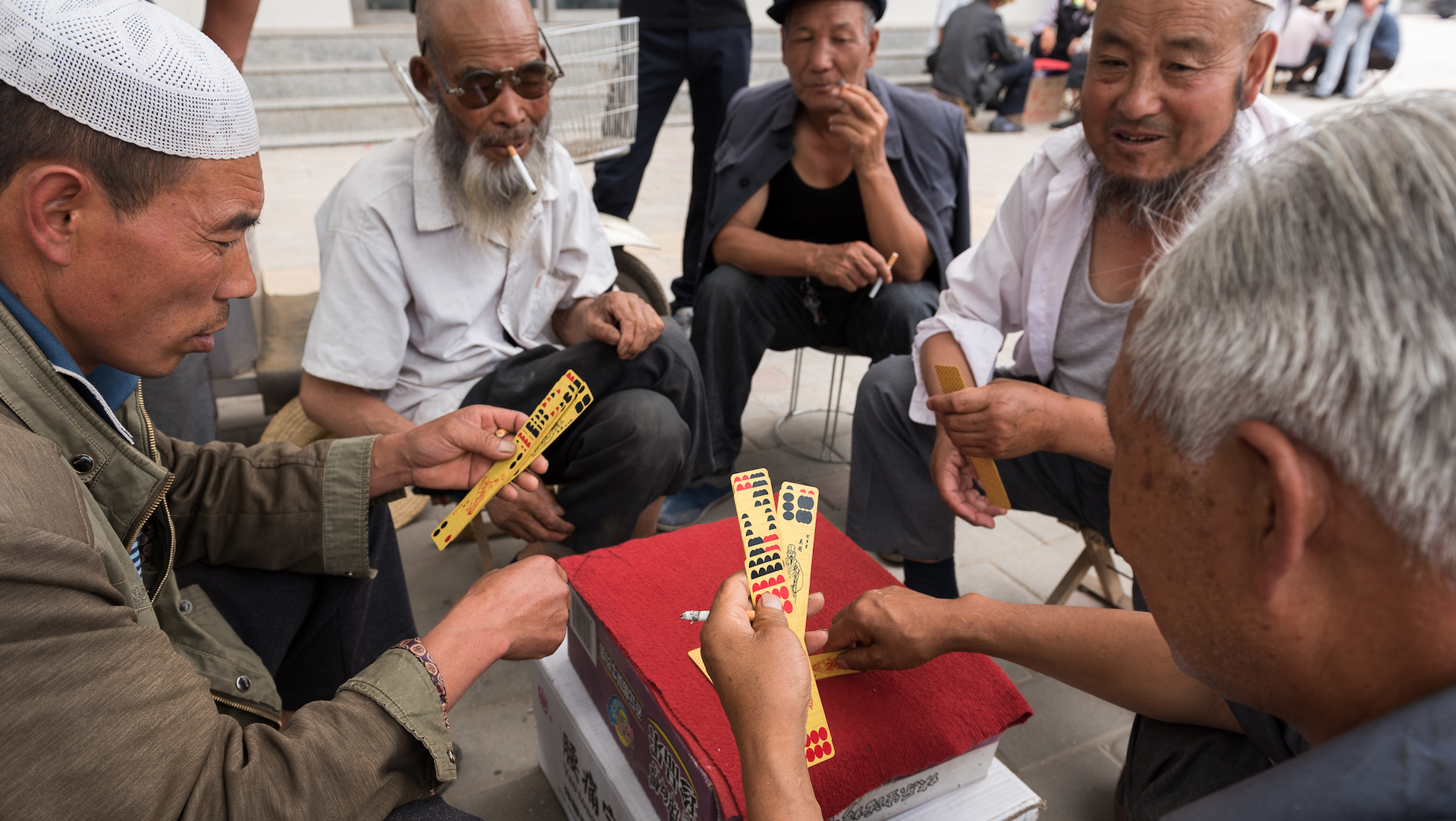 With fifteen million people, the Hui are the largest Muslim people group in China. The Hui are know to be jovial, good natured, and friendly toward foreign visitors. They speak Mandarin Chinese, and though they have historically not gotten along well with their Han Chinese neighbors, they cordially live and work alongside the Han today.
With fifteen million people, the Hui are the largest Muslim people group in China. The Hui are know to be jovial, good natured, and friendly toward foreign visitors. They speak Mandarin Chinese, and though they have historically not gotten along well with their Han Chinese neighbors, they cordially live and work alongside the Han today.
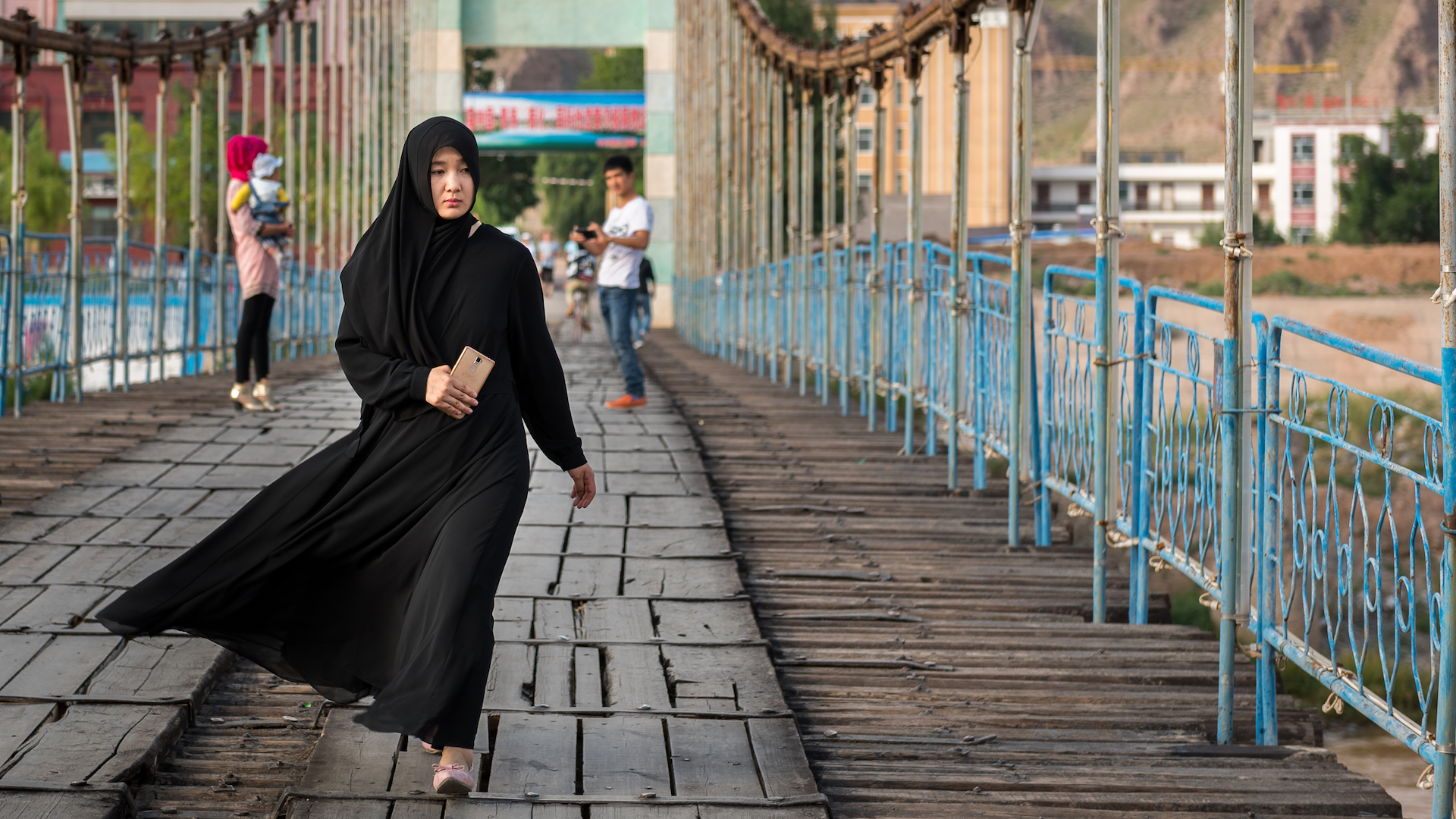 A Muslim woman strides across a bridge in Xunhua, Qinghai Province, covered in a dress style that stands in stark contrast to the western clothing worn by the Muslim family behind her.
A Muslim woman strides across a bridge in Xunhua, Qinghai Province, covered in a dress style that stands in stark contrast to the western clothing worn by the Muslim family behind her.
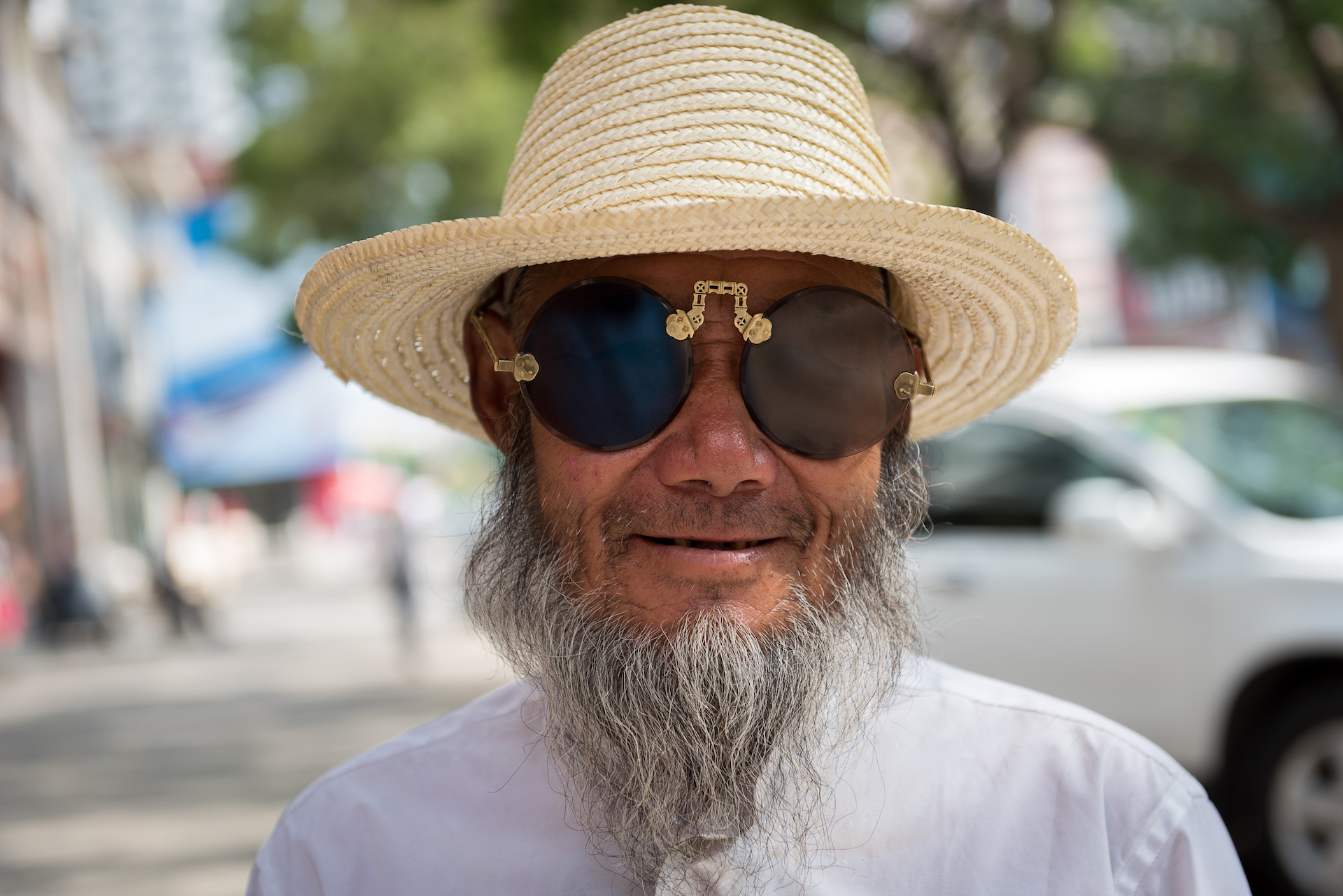 Although there are subtle differences in facial features among Chinese ethnicities, it’s their fashion choices that really distinguish Muslims in China from their Han Chinese neighbors. Beards are popular, but not required, among middle-aged and elderly Muslim men, and round spectacles are in vogue. Many Hui, like this man in Linxia, Gansu Province, wear brimmed straw hats or prayer caps. Women of marriageable age and older wear veils or hijab, as this woman does below.
Although there are subtle differences in facial features among Chinese ethnicities, it’s their fashion choices that really distinguish Muslims in China from their Han Chinese neighbors. Beards are popular, but not required, among middle-aged and elderly Muslim men, and round spectacles are in vogue. Many Hui, like this man in Linxia, Gansu Province, wear brimmed straw hats or prayer caps. Women of marriageable age and older wear veils or hijab, as this woman does below.
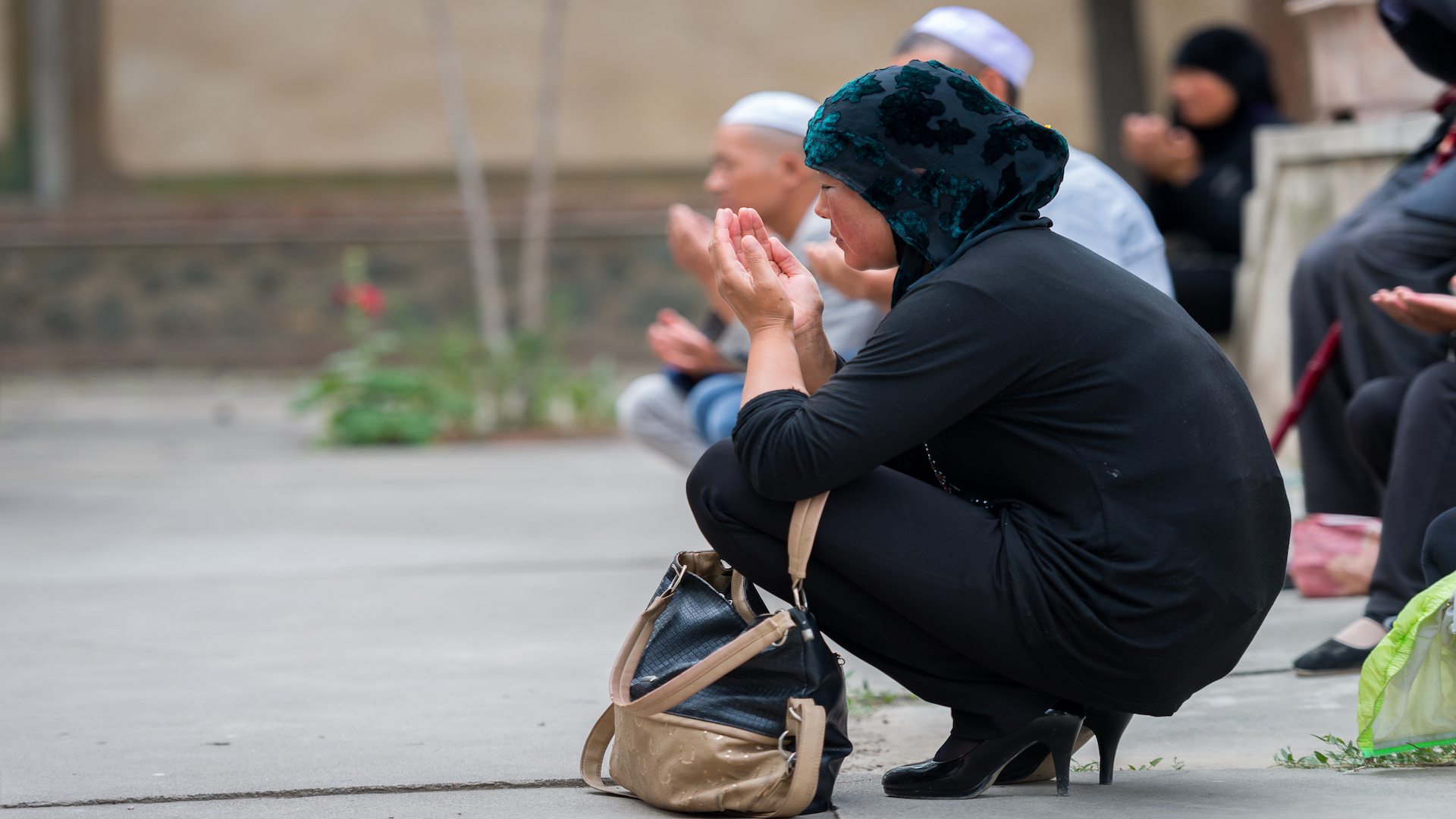
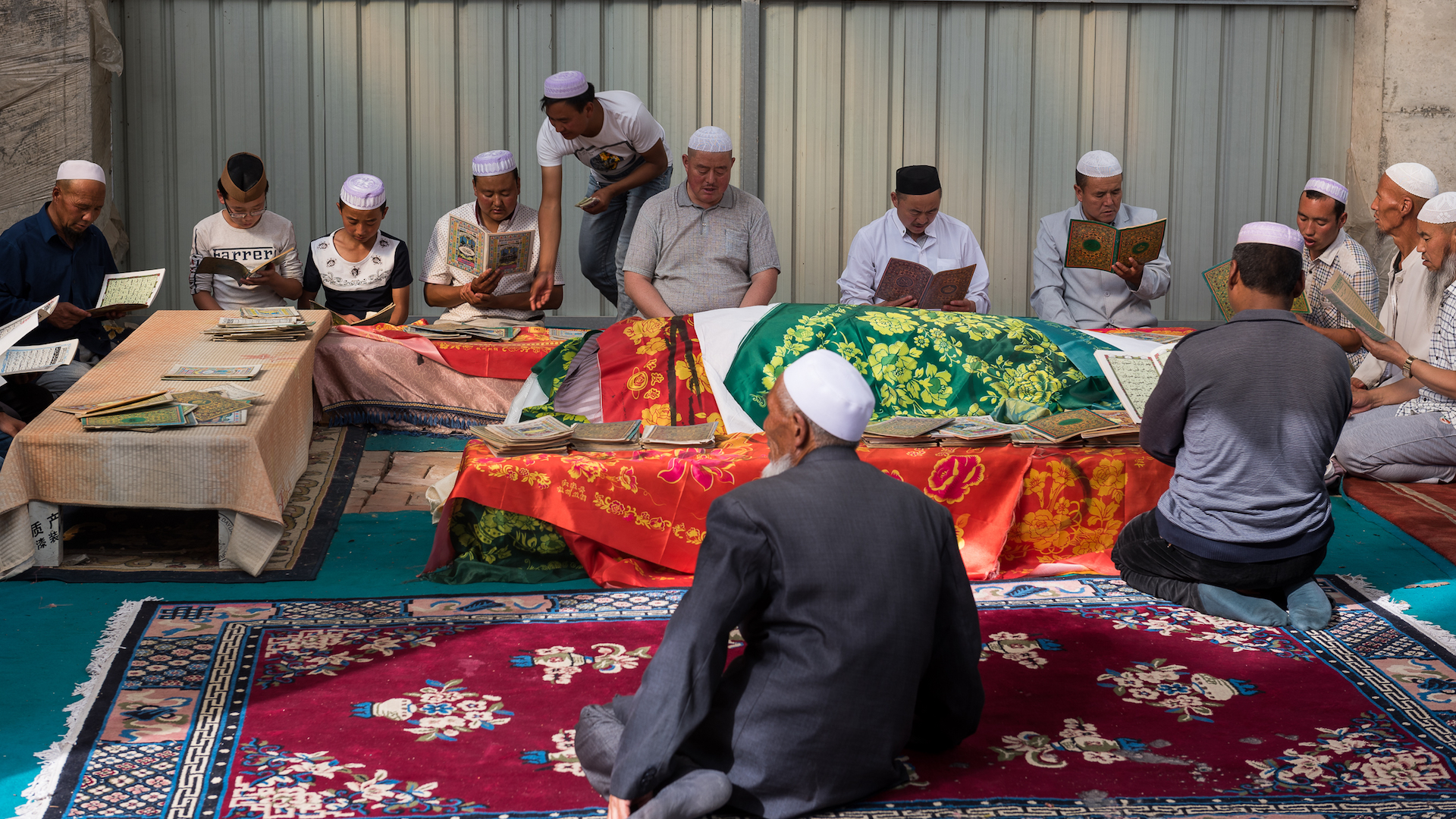 Muslim men in Linxia, Gansu Province, gather at a gongbei to read holy texts and pray. This practice stems from Sufism, a sect of Islam steeped in mystical practices.
Muslim men in Linxia, Gansu Province, gather at a gongbei to read holy texts and pray. This practice stems from Sufism, a sect of Islam steeped in mystical practices.
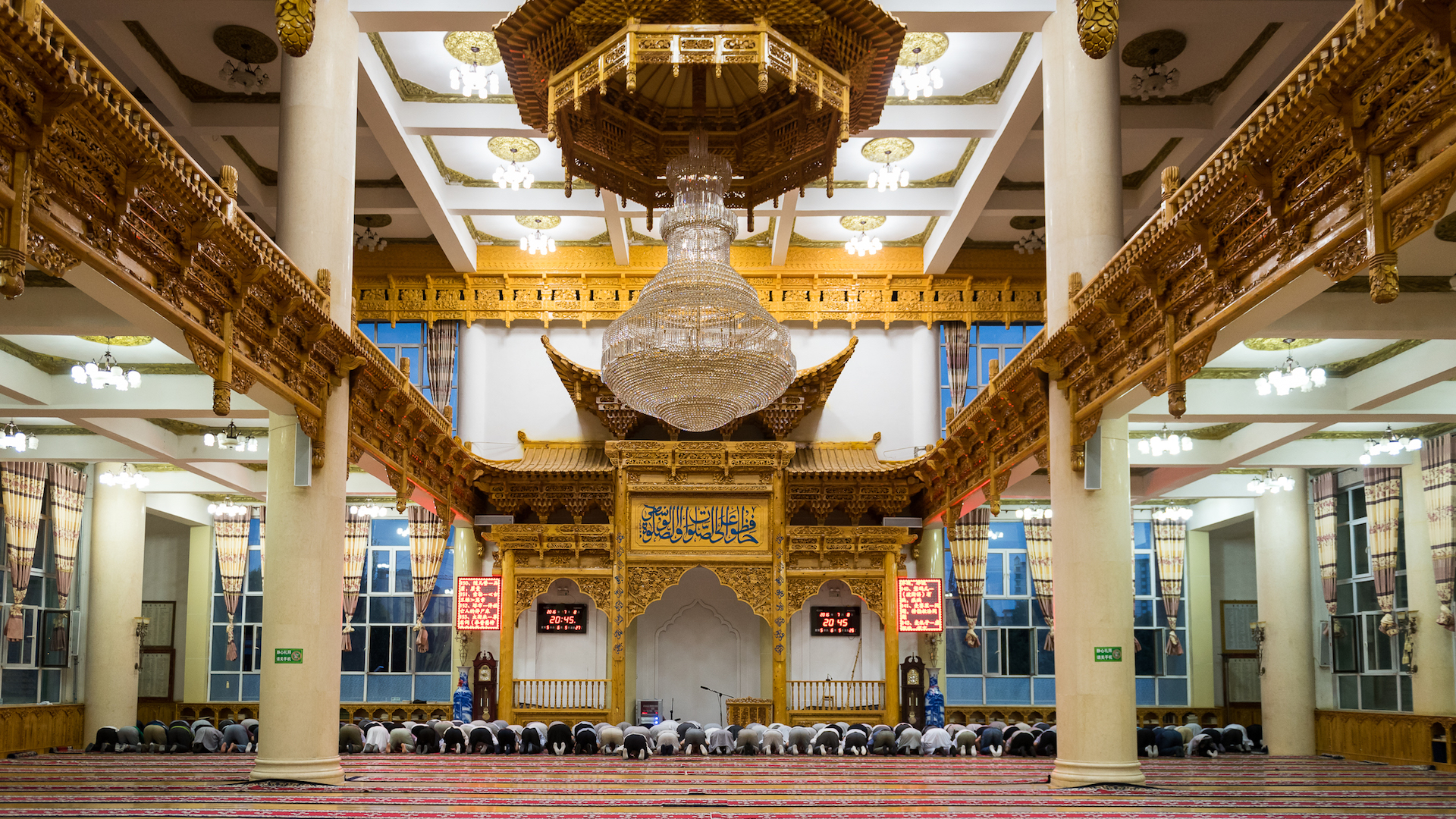 Muslims in China don’t view their religion as a choice, but as a circumstance of birth that can’t or shouldn’t be changed. Even if they hear the gospel, their hearts and minds remain tightly guarded and closed. Prayers for Jesus to draw them to himself are essential to seeing Muslims repent and put their faith in Christ.
Muslims in China don’t view their religion as a choice, but as a circumstance of birth that can’t or shouldn’t be changed. Even if they hear the gospel, their hearts and minds remain tightly guarded and closed. Prayers for Jesus to draw them to himself are essential to seeing Muslims repent and put their faith in Christ.
As God leads you to learn more and pray, use these resources to guide your intercession.
- Order a free copy of the prayer booklet, Pray for Chinese Muslims 30-day Guide. Shipping charges apply.
- Pray4hui.com helps Christians understand and pray for Hui people.
- Learn how to talk to Muslims about your faith by reading Any-3.
- Listen to the podcast episode Islam 101 with Zane Pratt
All photos were taken by Luke In, a media specialist serving in Asia with the IMB.
Emily Stockton lives overseas and writes for IMB. You can follow her on Twitter @EmilyStockton.

